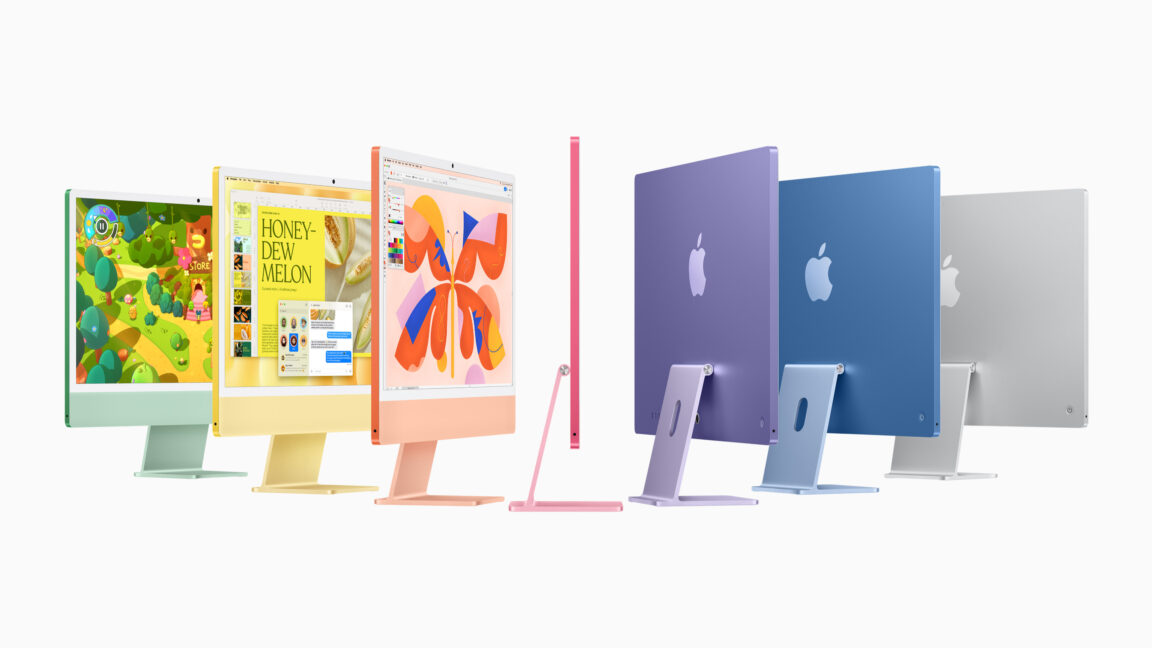
Beyond the core counts, an interesting upgrade for the fully-enabled version of the M4 is that it supports a total of three displays: the built-in iMac display, plus two external displays that can run at resolutions up to 6K (you could also connect a single 8K 120 Hz display instead, according to Apple’s specs page). The cut-down M4 in the $1,299 iMac still supports just a single 6K external display at 60 Hz.
This is the first time a base-model M-series chip has ever supported more than a total of two displays; you’d usually need to buy a Pro, Max, or Ultra-tier chip to get additional external displays. Even the M3 MacBook Pros and Airs could only support two external displays if you closed the lid, turning the laptop’s internal display off; M1 and M2 MacBooks are all limited to a single external display regardless of whether the laptop screen is on. This has interesting implications for future M4 Macs for people who like to use lots of monitors—an M4 Mac mini could support up to three external displays, while the M4 MacBook Pro and M4 MacBook Pro could support two external screens in addition to the laptop’s built-in screen.
The different iMac tiers are also differentiated by available upgrades. The iMacs with 256GB of storage can be bumped to 24GB of RAM for an additional $200. The $1,299 iMac can be upgraded to 512GB or 1TB of storage for $200 and $400, respectively. The $1,499 and $1,699 iMacs can be upgraded to 32GB of RAM for $400, but only when configured with 512GB or more of storage. The more-expensive iMacs also offer 2TB of storage for $800 and a nano-texture glass screen option for $200. Swapping from the Magic Mouse to a Magic Trackpad costs $50 across all models.
Aside from the USB-C ports on the external accessories, the only other external change to the iMac this year is that all seven color options—blue, purple, pink, orange, yellow, green, and silver—are available across all iMac prices and configurations. In previous generations, a few of the colors were only available in the more-expensive iMac models. Judging from Apple’s comparison page, all of the colors also appear to be just a tiny bit lighter than they were last year—it’s the most noticeable in the pink and yellow models, but in all cases it would probably be hard to tell without the old colors and the new ones side by side.
Since they’ll all launch running macOS Sequoia 15.1, these Macs will also support all available Apple Intelligence features out of the box, but these features will also work on any Apple Silicon Mac that has been updated to macOS 15.1.
This piece has been updated with additional details about external display support.
